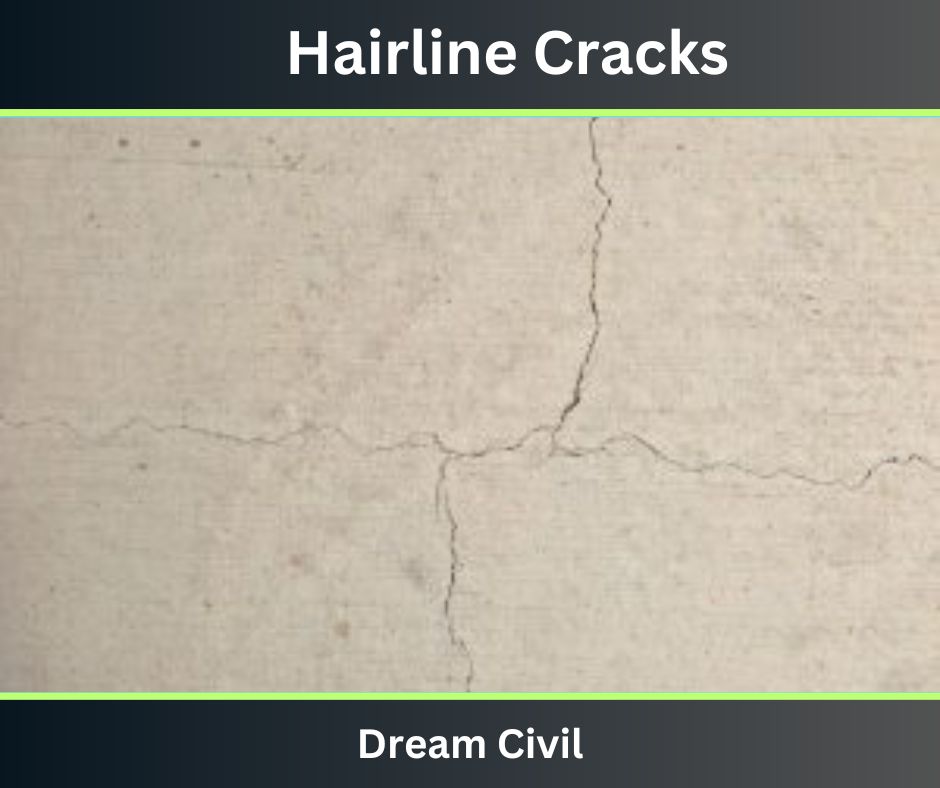Table of Contents
Hairline cracks in concrete are seen on the freshly poured concrete. The presence of hairline cracks is due to the phenomenon of plastic shrinkage. These cracks are very small- about 0.003 inches (0.08 mm) in width and can be very shallow that look like a single hair.
The line crack can be observed in walls, plaster, ceiling, etc.

1. Causes of Hairline Cracks
The causes that increase the chances of hairline cracks are as follows:
a. The water loss by the process of absorption by subgrade, formwork, or aggregate.
b. Due to bleeding and sedimentation
c. Due to poor workmanship and negligence
d. Due to Alkali-Aggregate reactions.
e. Due to the type and content of Portland cement and supplementary cementitious materials (fly ash, silica fume, etc.)
f. Due to the type and dosage rate of chemical admixtures.
g. Due to construction operations like screeding and finishing operations.

2. Prevention of Hairline Cracks
To prevent the structure from these cracks here are a few preventions;
a. Use of fog nozzles to saturate the air above the surface.
b. Use of plastic sheeting to cover the surface between the final finishing operations.
c. Use of windbreakers to reduce the wind velocity, and sunshades to reduce the surface temperature are also helpful.
d. Dampen the subgrade and formwork, ensuring that any excess water is removed prior to placing concrete
e. Applying a sprayable evaporation retardant
f. Use microfibers in the concrete mixture to increase the tensile capacity of the plastic concrete.
g. Starting of curing process as soon as possible after finishing.
3. Repair of Hairline Cracks in Concrete
It is very difficult to handle cracks. The cracks cannot be fully treated but can decrease their presence. Here are a few repairs of hairline cracks that are as follows;
1. Selection of Sealant
Sealant is a filler material that is inserted in the crack to fill the crack. The sealant should have low viscosity and surface tension. Those liquids that have these properties can be utilized as a sealant.
2. Cleaning of Crack
If the crack is shallow and thin in thickness then in that case there is no need for sealant. This is the first step to repair any crack whether it is in walls, ceiling anywhere.
3. Application of Sealant
The selected sealer is used on the substrate by utilizing a squeegee or a roller. The application process must be done for at least 5-10 mins to make sure the penetration.
4. Curing
The proper curing must be done to finish the hardening of the sealant. The warmer the temperature, the faster the curing, the lower the temperature, the longer it will consume.
This was for the Hairline Cracks in Concrete.
4. References1. Content Filter & Authenticity Checking Team, Dream Civil International (Our team checks every content & detail to maintain quality.) |
| Read Also: Causes and Prevention of Cracks |

